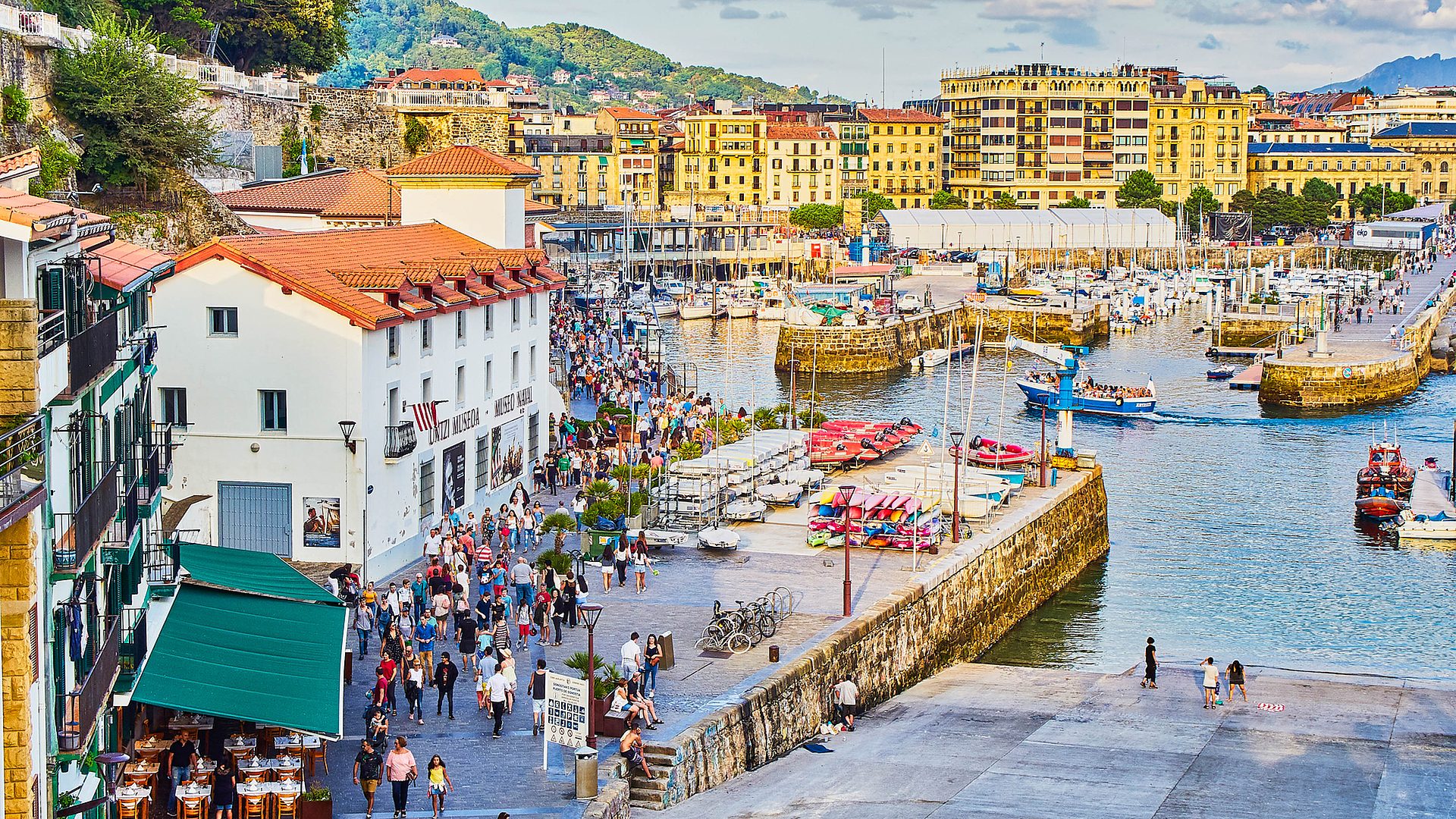
San Sebastián’s extraordinary architecture
San Sebastián, a small city in northern Spain, is known for various things including hosting the start of this year’s Tour de France and being the culinary heart of the Basque Country. But the city on the Bay of Biscay, also known as Donostia, has plenty to offer from an architectural perspective too. Read on to discover what makes San Sebastián’s architecture so special and the history that lies behind it.
Majestic scenery, eventful history
San Sebastián is a coastal city on the Bay of Biscay in northern Spain that is surrounded by a majestic natural landscape: the beautiful bays, long sandy beaches and breathtaking mountain scenery are teeming with animal life and have made the region a popular travel destination for nobles and aristocrats since the 19th century.
But San Sebastián’s political past was not always a harmonious one. The city was initially under Spanish, then French, then ultimately Spanish rule again. Several historic buildings were severely damaged during the Spanish Civil War. It was a big undertaking but most of these have now been restored and still shape the cityscape today.
The geographic proximity to France and the two countries’ shared political history are still evident throughout the city, for example in the ingredients contained in the local cuisine, the way in which dishes are prepared or the Basque language. Above all, however, the close historic ties to France can be seen in the Basque architecture.
Belle Époque meets modernism
So, what characterises San Sebastián’s architecture? First and foremost: variety. As such, it has to be described as combining various influences and appearances rather than having a clearly defined style. On the one hand, there are numerous historic buildings, some of which date all the way back to the Middle Ages, while on the other hand, there are impressive structures that were only built in the last few years and decades.
The ‘Parte Vieja’, the Old Town, gets its picturesque character from its narrow lanes, old squares and impressive house façades. Most of the buildings in this area date from the late 19th and early 20th centuries. During this period, known as the ‘Belle Époque’, people benefited from the economic upswing and invested in majestic buildings intended to reflect their impressive wealth in line with French and English models.
Three ‘must sees’ in San Sebastián
Fans of architecture should definitely check out these three buildings first hand – our ‘must sees’ for your visit to San Sebastián:
-
The Hotel María Cristina is built in Belle Époque style and opened in 1912 to accommodate the many wealthy visitors to the coast. The designs of the façade and interior are accordingly luxurious and opulent. Directly located on the banks of the Urumea River, the hotel’s central location could not be better.
-
On the opposite bank of the river is the Kursaal Congress Centre and Auditorium. Comprising two futuristic glass cubes, the appearance of this contrasts starkly with that of the hotel. The building is orientated to offer glorious views of the beautiful sandy beach behind which it is located. It was designed by Spanish architect Rafael Moneo and won the ‘Mies van der Rohe Award for European Architecture’.
-
The present-day Ayuntamiento (City Hall) can barely conceal its colourful past: people once tested their luck here playing blackjack and poker. The former casino is a successful example of Neo-Renaissance architecture – a style characterised by symmetrical façades, ornate decorative features and plenty of ostentation.
We could naturally also mention numerous other buildings, such as the Basque Culinary Center, the avant-garde façade of which has a truly unique appearance and highlights the importance of cuisine in San Sebastián, but we think you should check out the city’s architectural beauty for yourself, for example by following the Tour de France. Enjoy!